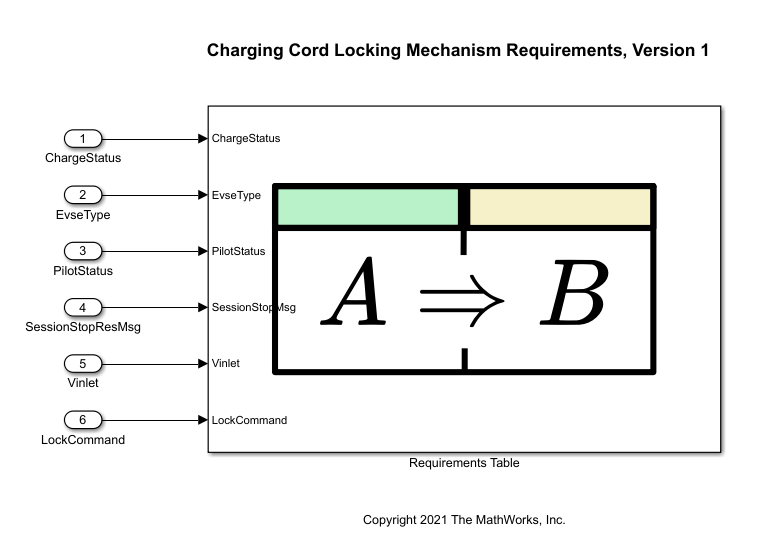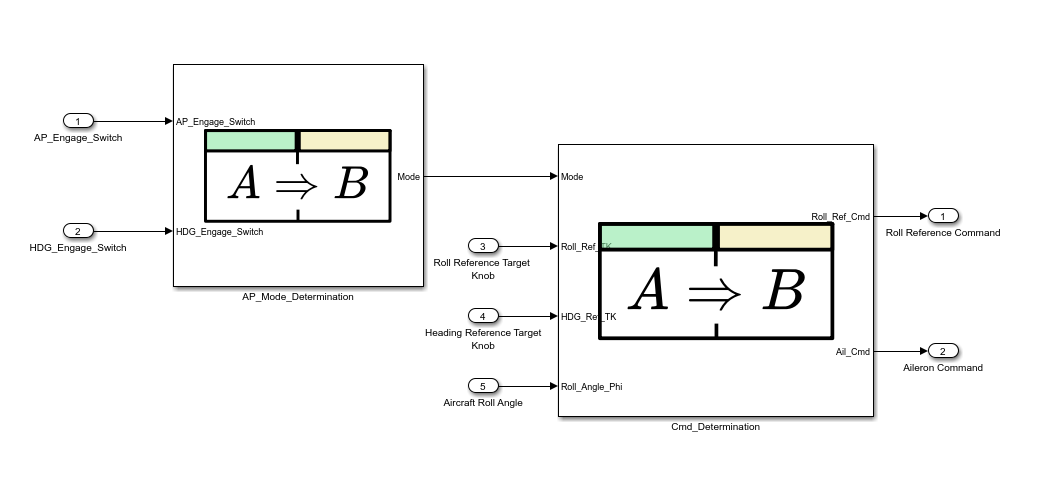对需求进行建模和验证
使用 Requirements Table 模块来对需求进行建模和分析,以验证一致性和完整性
模块
| Requirements Table | 使用输入条件对形式化需求进行建模 (自 R2022a 起) |
函数
运算符
对象
对象函数
主题
创建需求
- 使用 Requirements Table 模块创建正式需求
使用 Requirements Table 模块评估形式化需求。 (自 R2022a 起) - 使用 Requirements Table 块构建规范模型
了解规范模型以及如何使用它们进行基于需求的验证。 (自 R2022b 起) - 将假设添加到需求中
使用假设根据物理限制来约束 Requirements Table 模块中的正式需求数据。 (自 R2022a 起) - 在 Requirements Table 模块中指定行类型
在 Requirements Table 模块中定义需求和假设的行类型。 (自 R2022a 起) - 通过编程创建 Requirements Table 模块
从 MATLAB 命令行创建和修改 Requirements Table 模块。 (自 R2022a 起) - 使用时序逻辑执行控制需求
使用时序逻辑运算符来控制需求评估和执行。 (自 R2022a 起)
定义计算逻辑
- 在 Requirements Table 模块中建立层次结构
在需求或假设之间建立父子关系。 (自 R2022a 起) - 在 Requirements Table 模块中指定子评估
指定模块如何评估 Requirements Table 中层次结构每个级别的需求。 (自 R2023b 起)
- 利用形式需求的评估顺序
在 Requirements Table 模块中指定评估顺序。 (自 R2022a 起) - 检测先读后写问题
使用 Simulink Design Verifier 检测 Requirements Table 模块中的先读后写问题。 (自 R2022a 起)
配置 Requirements Table 模块的属性
- 配置形式化需求的属性
修改 Requirements Table 模块中每个需求的类型、描述或理由。 (自 R2022a 起)
配置数据
- 在 Requirements Table 模块中定义数据
在 Requirements Table 模块中添加或修改数据。 (自 R2022a 起) - 在 Requirements Table 模块中设置数据类型
指定正式需求中要使用的数据类型。 (自 R2022a 起) - 指定 Requirements Table 模块数据的大小
在 Requirements Table 模块中指定数据大小。 (自 R2022a 起) - 使用 Requirements Table 模块检测数据变化
当数据在时间步之间发生变化时执行形式化需求。 (自 R2022a 起)
验证需求
- 分析 Requirements Table 模块以识别需求规格说明问题
使用 Simulink Design Verifier 来验证 Requirements Table 模块。 (自 R2022a 起) - 识别不一致和不完整的正式需求集
使用 Simulink Design Verifier 查找不一致和不完整的需求集。 (自 R2022a 起) - 检测 Requirements Table 模块中的排他性问题
使用 Simulink Design Verifier 来识别具有互斥穷举子需求的问题。 (自 R2023b 起)
疑难解答
通过在仿真过程中使用断点和分析模块数据来调试 Requirements Table 模块。 (自 R2023a 起)



